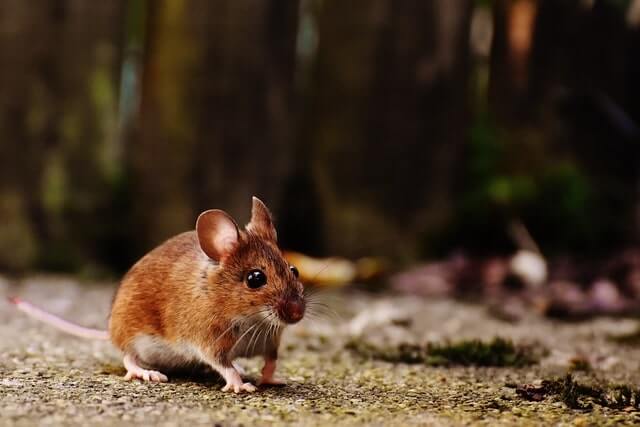Learn of the Types of Openings in Your Home that Mice Can Squeeze Through
Today you will learn how to know where to look for mouse entry points. Previously, you learned that mice can fit into any opening one-fourth of an inch in diameter: the size of an eraser cap tip. Mice search for and find many little openings in a home through which they can squeeze.
They don’t have very good eyesight so they run right next to a structure. As their fur brushes up against the structure, it leaves pheromones, just like the droppings and urine they continuously leave. This alerts other mice of their presence and that your home or business may be a safe, warm home for them.
Mice often look for man-made openings, like an air-conditioning line or laundry vent. But if those don’t work, oftentimes Minnesota’s changing of seasons can create little cracks and crevices wide enough for mice to squeeze into.
Table of Contents:
- What areas do I look for entry points?
- What materials do I use?
- Step-by-step how to thoroughly look for entry points
- Conclusion
What Areas Do I Look for Entry Points?
- laundry vent
- air-conditioning line
- around decks, patios
- under decks, porches
- along garage foundations
Mice can even get into your home from a crack in the pavement along your garage! Though that is less common, mice are very adventurous in the ways in which they get into homes for the winters.
Because we have no licensed contractors on staff, we do not close any openings larger than 1-inch in diameter, but can give some tips on how to close them yourself.
What Materials Do I Use?
- Our technicians wear knee pads as protection as they inspect the foundation. If you want to use some knee pads or a foam pad to kneel on to inspect the foundation, by all means!
- We use a copper-wire mesh to seal the openings, but you can use a steel-wool or other metal mesh.
- You can also use a type of foam spray.
- If you are going to use a foam spray, we would recommend the brand Great Stuff, as it has a bitter component to it so it will deter mice from chewing through it. Mice can and may still chew through it, but that bitter component makes it less likely that they may chew through it.
- For bigger openings you may need a stronger adhesive still, like caulk.
- For even bigger openings you may need to hire a contractor to seal the openings with cement work or other means. We also have a friend who is a handyman in the Twin Cities metro area!
How to Thoroughly Look for Entry Points?
- Start at the laundry vent on the exterior of the home
- Check the cover to make sure it is secure, so mice cannot get in that vent
- Keep in mind the size of openings they can squeeze into: 1/4th of an inch (about the size of the eraser cap top)
- Make your way along the foundation, foot by foot, looking for anything a mouse can squeeze into
- Be sure to check the air-conditioning line
- Search under decks and porches as best as you can for any openings along that foundation area
- Check areas where decks, patios, porches meet the foundation or the siding of the house
- Continue the process until you have crawled around the entire exterior of your home
Conclusion
In the introduction you learned that mice can fit into the tiniest of openings (one-fourth of an inch in diameter). This means exclusion (closing the entry points) is crucial to eliminating mouse problems. You learned what areas to look for entry points, what materials to use to close them, and a step by step how-to guide. Exclusion work is the first step to solving your mouse problem on your own.
For more information regarding tips and tricks, check out our rodent categories of our blog.
If you want to rodent proof your home this winter, or want a one-time mouse service to rid you of the mice your home has and don’t want to do it yourself, give our office a call today! Our experts can answer any additional questions or concerns you might have! Call or text 651-342-9489; email us at donerightpestsolutions@gmail.com.
Now that you’ve learned how to know where to look for mouse entry points, you can continue your education by reading other blogs. If you’d like to learn How to Perform Your Own Mouse Service, Done Right, check out our infographic. Check out our Complete Mouse Control Guide that has all this information and more!
Was this short post helpful? Did you try out these tips or read our infographic to perform your own mouse service? If so, comment below on what you found helpful!

